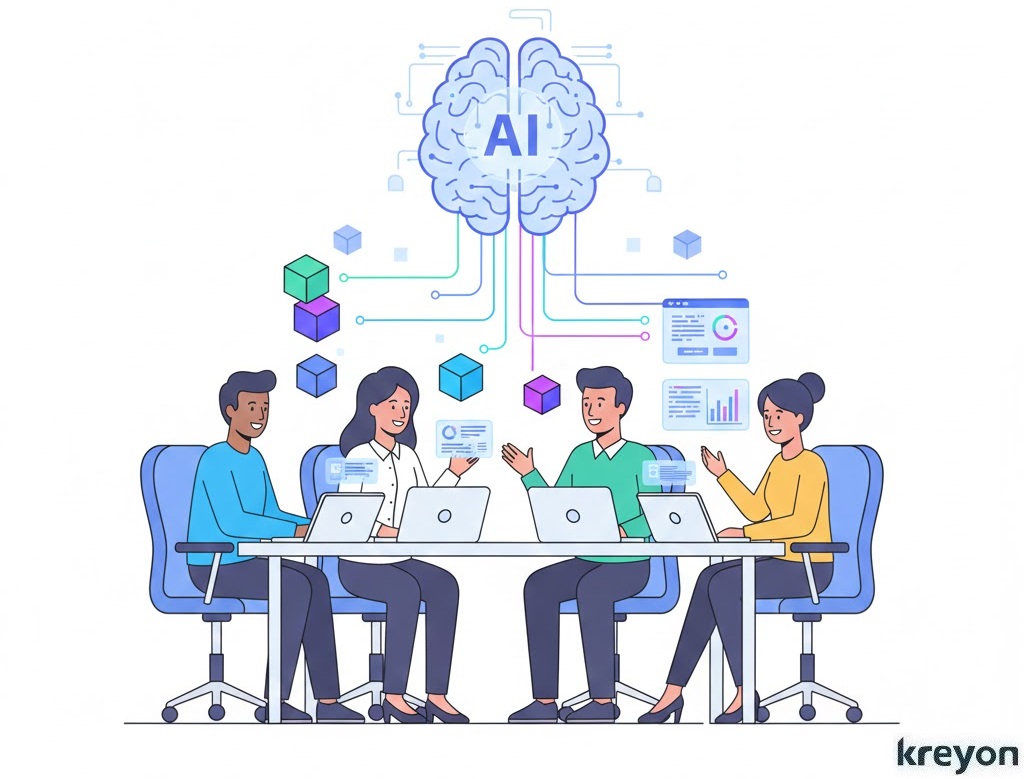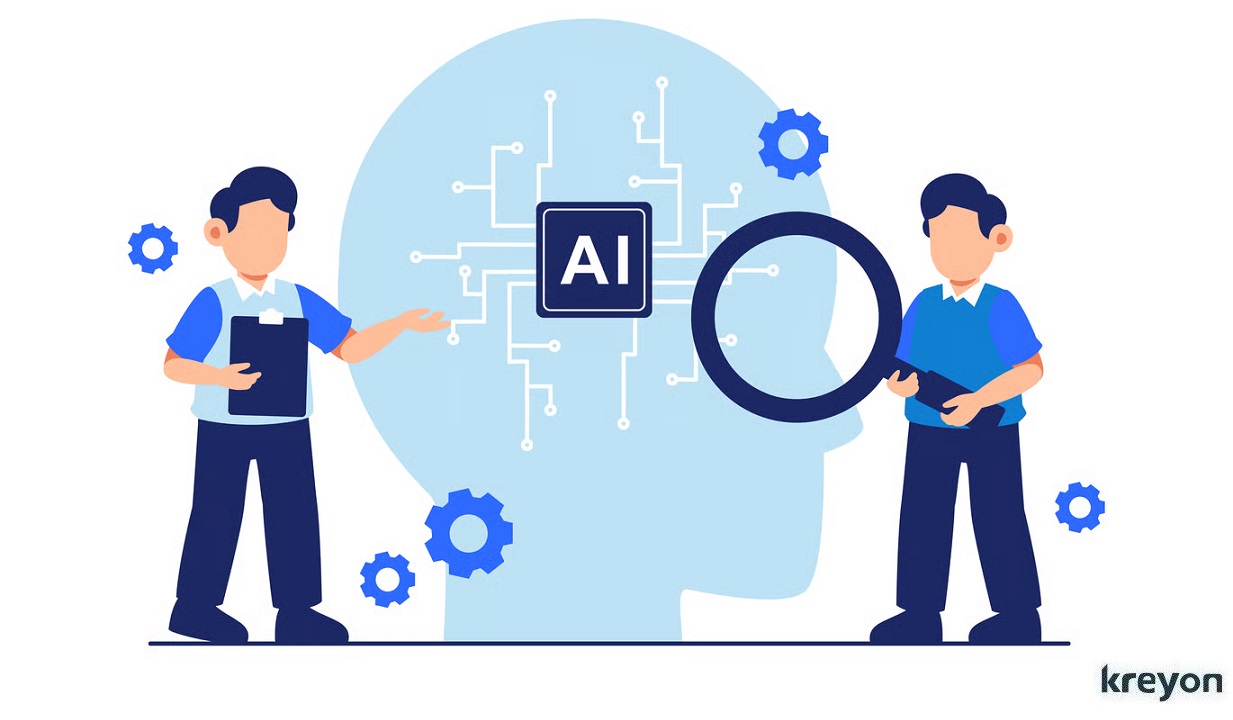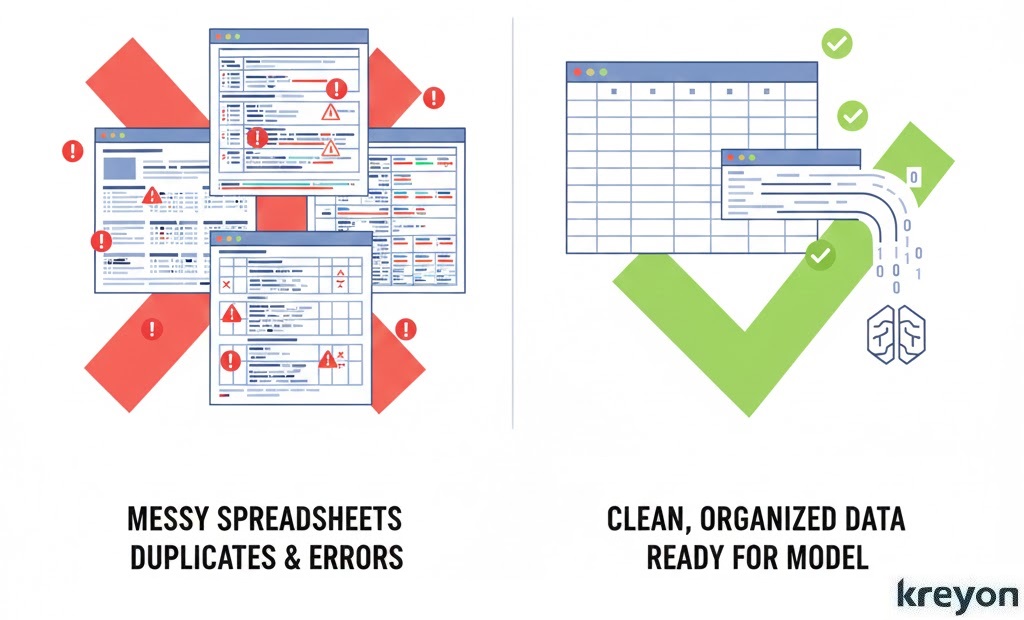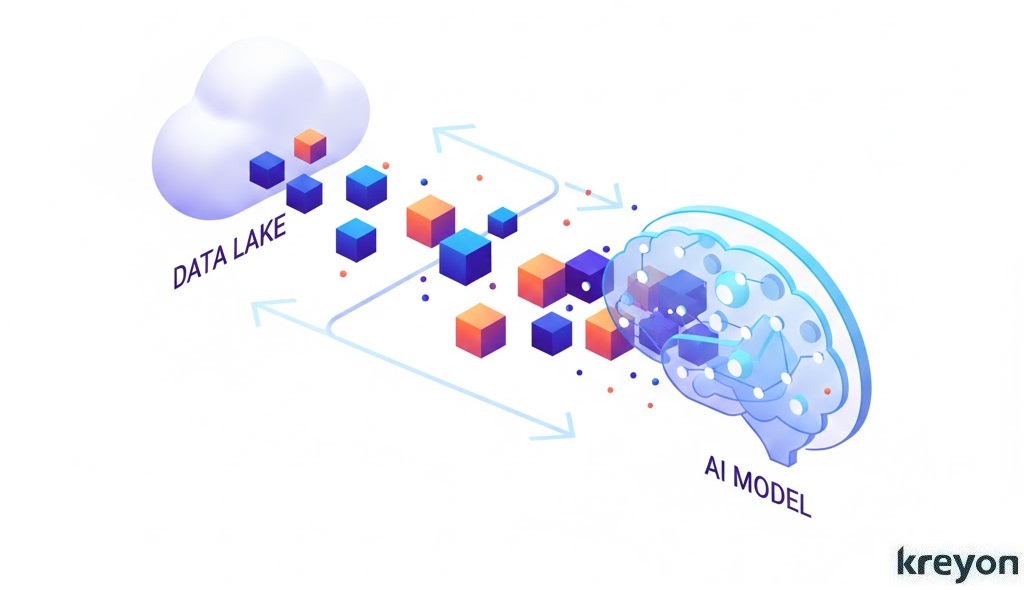Data Engineering for AI Readiness: Why Your Data Lake Matters More Than Your Models

Everyone’s talking about AI these days. Companies are pouring millions into training fancy models, tweaking hyperparameters, and scaling compute power. But here’s the reality: the real magic (or the real disaster) happens before the model even sees your data. That’s where data engineering for AI readiness comes in.
Think of your model as a high-performance car. No matter how sleek the engine is, it won’t go far if you fuel it with dirty gas. That “fuel” is clean, well-structured, trustworthy data stored in a data lake or, better yet, a well-designed data platform. Without that solid foundation, even the most sophisticated AI models will stumble.
In this post, we’ll dive into why your data lake matters more than your models, what it takes to build a strong engineering foundation, and how to turn raw data into actionable insights that actually drive decisions.
1. The Myth of AI Without Solid Data Engineering
Most companies start with models first and think about data engineering later. That’s like putting the cart before the horse. True AI success begins with data engineering for AI, not just the model itself.
-
Bad data = bad results: If your data lake is full of duplicates, gaps, or messy formatting, your AI won’t learn patterns, it’ll learn noise.
-
Data comes first, even for AI leaders: Andrew Ng and other AI experts stress “data-centric AI.” Improving the quality of your data beats just throwing more compute at a problem.
-
ROI goldmine: Every dollar invested in clean, organized data saves multiples in retraining, debugging, and downstream costs.
Bottom line: data engineering isn’t optional, it’s the bedrock of AI success.
2. Building a Robust Data Lake: The Heart of AI Readiness
What Is a Data Lake and Why It Matters
A data lake is essentially a single, centralized storage space for all your data structured, semi-structured, and unstructured. Unlike rigid data warehouses, a lake lets you ingest data in its raw form and transform it as needed. For data engineering for AI, it’s your fuel depot, the source from which your AI derives its power.
What Makes a Data Lake AI-Ready
-
Scalable: As your AI pipelines grow, so does your storage. Cloud-native lakes (Amazon S3, Google Cloud Storage, Azure Data Lake) make scaling seamless.
-
Flexible: Bring in CSVs, logs, JSON events, video, or streaming data, no rigid schema required upfront.
-
Cost-effective: Store raw data cheaply, keeping it available for historical analysis or retraining.
Best Practices
-
Partition your data: Organize by time, source, or logical dimensions to speed up queries.
-
Use layered architecture: A bronze-silver-gold or raw-curated-conformed setup separates raw ingestion, cleaning, and feature-ready tables.
-
Maintain a metadata catalog: Tools like Apache Hive, AWS Glue, or Google Data Catalog help your team quickly find and understand datasets.
With a well-architected data lake, you’re building a foundation that keeps your AI initiatives strong for years to come.
3. Ensuring Data Quality & Governance: Making Your Data AI-Ready

A data lake is useless if the data inside is unreliable. That’s where governance and quality checks come in.
Why Data Quality Matters
-
Missing values can skew models.
-
Inconsistent formats (think date strings vs timestamps) confuse feature pipelines.
-
Duplicate or conflicting records can lead to faulty predictions.
Governance Strategies
-
Data validation pipelines: Use Great Expectations, Deequ, or custom Spark jobs to enforce consistency.
-
Data lineage: Track where data came from and how it was transformed with tools like Apache Atlas or Google Data Catalog.
-
Access controls: Implement role-based permissions and data masking, especially critical in regulated industries.
-
Versioning: Keep historical versions of datasets to debug model drift or replicate experiments.
When you combine quality and governance, your data engineering for AI pipelines become reliable, repeatable, and audit-ready.
4. Real-Time Data Pipelines: Streaming for Next-Gen AI
Batch processing isn’t enough anymore. Modern AI often demands real-time or near-real-time data, from fraud detection to predictive maintenance.
Why Streaming Matters
-
Lower latency: Your model stays current, catching anomalies as they happen.
-
Continuous learning: Streaming allows incremental updates or online learning.
-
Immediate insights: Dashboards fed by live data provide actionable information right when it’s needed.
How to Build Streaming Pipelines
-
Tools: Kafka, Google Pub/Sub, Amazon Kinesis, Apache Pulsar.
-
Frameworks: Flink, Spark Streaming, Apache Beam for transformations, enrichment, and windowing.
-
Storage: Raw streams in your lake or a dedicated message store.
-
Feature store: Serve consistent features for both training and real-time inference (e.g., Feast).
Streaming makes your data engineering for AI pipelines not just predictive, but reactive.
5. Scalable Architecture: Microservices + Data Engineering for AI

A monolithic system won’t cut it. Modular, microservices-based architectures integrate data engineering smoothly into your AI ecosystem.
Benefits
-
Decoupling: Different teams manage ingestion, transformation, and feature services independently.
-
Resilience: Failures in one service don’t crash the whole pipeline.
-
Scalability: Scale services individually based on demand.
Designing AI-Ready Microservices
-
Data ingestion service: Handles raw data with APIs for buffering events.
-
Transformation service: Runs ETL on batches or streams.
-
Feature-serving service: Provides consistent features to models.
-
Model inference service: Delivers real-time predictions via an API endpoint.
A microservices architecture ensures your data engineering for AI pipelines stay flexible, maintainable, and resilient.
6. Tooling & Infrastructure: The Data Engineering Stack for AI Readiness
To build a data platform you’d be proud of, you need the right tools. The data engineering for AI stack can get complicated, but here are key layers and recommended tools.
Core Tooling Layers
-
Storage & Lake Infrastructure
-
Cloud: Amazon S3, Google Cloud Storage, Azure Data Lake
-
On-prem: Hadoop HDFS or MinIO
-
-
Processing Engines
-
Batch: Apache Spark, Databricks, Google Dataflow
-
Streaming: Flink, Spark Structured Streaming
-
-
Feature Store & Serving
-
Feast, Tecton, or custom-built
-
-
Metadata & Catalog
-
Apache Atlas, AWS Glue Data Catalog, Google Data Catalog
-
-
Orchestration
-
Airflow, Prefect, Dagster
-
-
Data Validation & Testing
-
Great Expectations, Deequ
-
-
Monitoring & Observability
-
Prometheus, Grafana, Datadog, OpenTelemetry
-
By investing in a solid data engineering for AI stack, you’re building not just a lake, but a live, breathing data organ that supports sustainable AI.
7. Security & Compliance: Data Engineering for AI in a Regulated World

For many enterprises, data isn’t just a technical asset, it’s a liability. Especially when building AI, security and compliance must be baked into your data engineering.
Key Considerations
-
Encryption: Encrypt data at rest (in your data lake) and in transit (during ETL or streaming).
-
Access control: Use IAM, RBAC, and fine-grained permissions to restrict who can read, write, or transform data.
-
Audit logging: Keep detailed logs of data access and transformations — essential for regulatory audits.
-
Privacy: If you’re handling PII or sensitive data, implement masking, anonymization, or tokenization.
-
Data residency: Ensure data governance policies comply with regional data residency laws, such as GDPR or CCPA.
By embedding data engineering for AI with security practices, you protect not just your models, but your company’s reputation and compliance posture.
Conclusion
Building AI isn’t just about training models, it’s about building an AI-ready data ecosystem that fuels them with clean, trusted, and timely data.
A data lake isn’t a passive storage tank, it’s the engine behind your AI success. With proper pipelines, governance, microservices, and security, your models perform better today and scale effortlessly tomorrow.
AI success begins in the data lake. At Kreyon Systems, we build the engineered data foundation that makes your models trustworthy and scalable. If you have queries, please contact us.
